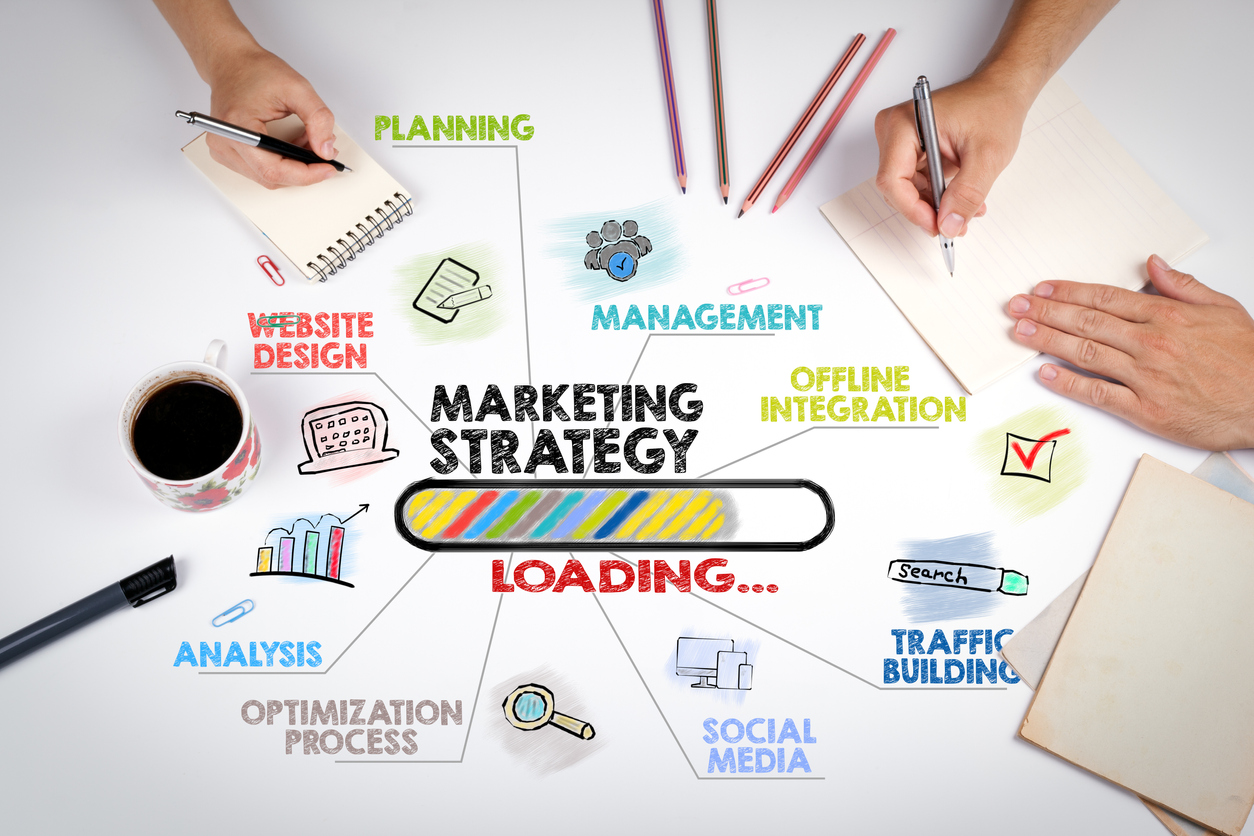
The biggest digital marketing trends of 2023
To say changes are coming to marketing this year is an understatement.
Shiny new toys like ChatGPT are all over the place. But trying to experiment with them seems silly in this tough economic environment.
This juxtaposition has everyone asking how to distinguish between the technology and strategies that are a good investment and the ones that are a distraction in disguise.
Book a 30 minute call
Reserve 30 minutes with a strategist and get 30 hours worth of value.
In this article, I’ll make a few predictions and share some tactics to help you adapt to this new marketing ecosystem and set your team up for success.
What’s changing, and what’s staying the same?
What’s staying the same
Let’s face it: your goals probably aren’t changing. Leadership doesn’t care that you have half the budget you had before — you still have to drive 30% more MQL from revenue.
You’ll have to figure out how to do more with less. This will take an honest conversation about what actually generates impact. You’ll find a lot is happening in your org that can be turned off or cut back.
What’s changing
Most companies we work with aren’t generating and creating demand. They’re waiting with wide open arms and 19 funnels, and no one is coming through.
Marketers have to focus on gathering first-party data. You must create more spaces where you actually own your data — think email list, communities, etc.
3 major B2B changes borrowed from B2C
Over time, B2C best practices tend to move to B2B. This year, it looks like main ones will be:
- User-generated content. Short-form, vertical video native to platforms like Facebook, TikTok, and Instagram is coming to B2B. Most prospects get overwhelmed looking at B2B landing pages with big technical paragraphs and tons of buzzwords. Making your point in a 60-second video will help you stand out.
Create bite-sized pieces of content you can distribute across multiple channels that will prioritize this kind of content.
- Optimizing to a funnel, not for number of leads. B2C has been doing this forever with e-commerce bidding, targeting people with abandoned carts. But B2B marketers haven’t really been able to — until now.
Google, Facebook, and LinkedIn have all come out with APIs that hook into your CRM, meaning you can tell the platforms to actively seek out people who will match certain criteria and are likely to have the sales team mark them as an MQL.
- Try before you buy. B2B buyers are starting to act like consumers in this recessionary environment. They want to see and try your product before engaging with the sales team. And free trials are ok, but what’s even better are interactive demos.
They remove the barrier of getting prospects on the phone with a qualifying SDR who eventually gets them a call with their AE. Prospects know the product aligns with their needs before talking to the sales team. Navattic is a great one, but there are others, too. Think about giving as much of the product and user experience away as possible.
How to get ahead with your 2023 marketing plan
The chaos and uncertainty lend themselves to a forced discipline for the year. Yes, there are tons of shiny things we can do. And in years when people were flush with cash, they could afford trial and error. But not today.
One of the best tips for creating a disciplined marketing mindset is to consider everything you’re doing in terms of a file folder structure.
First, pick two to four really big, critical ideas. These are your pillars, your biggest file folders.
Inside each of those pillars, you’ll need to plan initiatives that move the ball forward (another folder). Each initiative has campaigns (another folder).
Each campaign has a tactic, like ads, email, and other activities (more folders).
When you look at your marketing plan broadly, you have something like this:
Pillar → Initiative → Campaign → Tactic.
All the pieces fit together. So if what you’re doing day-to-day doesn’t fall under one of the categories, take it off your to-do list. Say no to things that don’t fit.
Besides helping you prioritize, this structure also helps you report to your superiors and explain your strategy to the company. Everyone can remember four things, right? Tying every activity back to one of those is key.
Making the plan stick
Following this structure takes discipline. And as the year goes on, you’ll start to see other opportunities (distractions) on the horizon. So how do you make it stick?
Create a parking lot. There may be new technologies or strategies that everyone agrees are a good idea, but it’s not the right time to execute them. Create a “parking lot” for those ideas so you can consider them whenever you have the time and resources to do it well.
The parking lot naturally lends itself to conversations about headcount. Going back to this list at the end of every quarter or year can help you figure out who else you might need to hire in the future.
It’s important to note that you’ll probably get into situations where your superior wants to try something they heard about in some podcast or from a colleague. That’s when you’ll need to have a frank conversation — what they want comes at the expense of the other pillar work you have going. They will have to accept that the results may not be what they expect.
How to leverage AI in marketing
I saw a fantastic quote on LinkedIn that said, “AI and ChatGPT aren’t going to take your job away. But humans using them correctly might.”
It’s our job to determine what these platforms can do and how we can use them to our advantage.
One thing AI is great for is ideation. Say you need 15 sample subject lines to get your juices flowing. You may not copy and paste them into your sequence, but you’ll get ideas you didn’t otherwise have.
But you need to understand how to write good prompts. Most of the time, the first result the tool gives you won’t be good.
For example, say I want to write copy targeting IT directors. The first thing I might ask ChatGPT is for 10 problems IT directors are facing right now. Whatever it spits out will be pretty standard.
But then, you can ask it to create an emotional story around each of those problems. Now you’re getting a narrative that will resonate with your prospects, and you can iterate off of those to tailor it specifically to your audience.
Knowing how to prompt an AI tool is especially important for creative AI like Midjourney. Someone really skilled at prompting will get some incredible artwork back. It’s also really good for concepting and storyboarding.
LinkedIn: The best marketing channel for B2B
LinkedIn’s always been there, but in the past, it’s been too expensive and obscure to optimize.
Over the last year, LinkedIn has modernized its ad platform, adding a conversions API to bring in high-quality leads. CPMs are still expensive. But now you’ll be able to better predict what you’ll get out of the platform.
Hint: Your audience might be super specific, making it hard to natively target them on LinkedIn. Try using their Sales Navigator tool, which allows you to build lists of prospects based on very specific key keywords and criteria.
Then, use a tool called PhantomBuster to scrape a list of these contacts and enrich them with something like a ZoomInfo or SalesIntel. And voila, you have a list of LinkedIn URLs along with their emails you can feedback in as a matched audience. We’re testing this now and seeing crazy click-through rates — less than $1 CPCs.
The death of third-party cookies
At some point, you won’t be able to retarget the people coming to your site. You’ll have to find a way to get them back there. Email lists, communities, and other things that give away value are what it will take.
I think newsletters are the easiest. Treat your list as real humans with whom you want to build a genuine relationship. Get people to subscribe because they believe they won’t get sold to and will get outsized value from your content.
These people will have higher engagement, and a year down the road, you’ll have built a lot of trust. At that point, you can target your list with more promotional-type emails. But if you don’t start building your relationships now, you will have the same hundred people on your email list next year, and you won’t be able to target anyone outside of that.
Ad platforms will still exist, but they won’t be as good. It’ll be akin to what we’ve seen Facebook do with housing, employment, and credit characteristics. You can target those, but you can’t target more accurate demographics like age and household income.
Discipline is key
I don’t want to over-index on the word “discipline” because it’s kind of a cliche.
But the best advice I have for marketers this year is to adopt an honest mindset. An increased sense of ownership.
You’re in the driver’s seat. You see how the engine is working, where the leads are coming from. And you’re the person who can develop a strong opinion on the company’s best marketing leverage points.
So take a step back once in a while and ask, “Is our marketing making people want our stuff?” Focus on the practical rather than the theoretical, and you’ll be on your way.
Want some help making a lean, mean marketing machine? Schedule time with the experts at WebMechanix.
And if you’re hungry for more digital marketing content, check out our YouTube channel, where we post all of our Growth Clinic recordings. Sign up for our next one here.
Most newsletters suck...
So while we technically have to call this a daily newsletter so people know what it is, it's anything but.
You won't find any 'industry standards' or 'guru best practices' here - only the real stuff that actually moves the needle.







